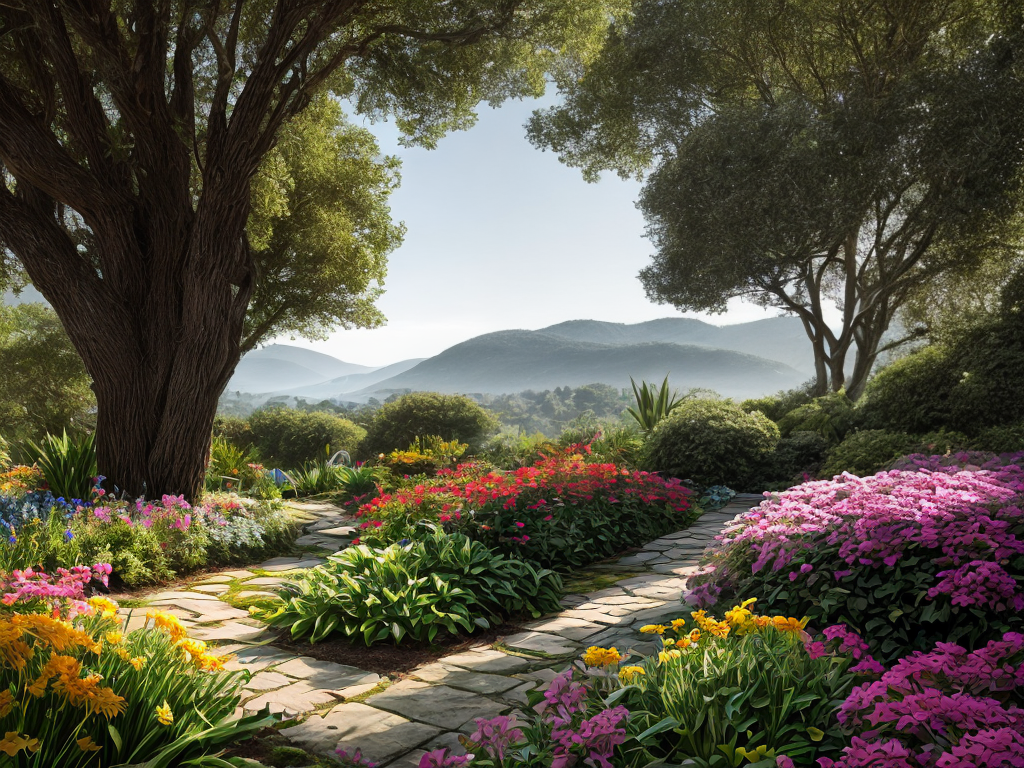
Have you ever wondered why some plants thrive effortlessly while others struggle to survive? Choosing the right plants for your region is the key to a thriving garden. In this discussion, I will provide you with essential tips and expert advice to help you make informed decisions about the plants that will flourish in your specific climate, soil, and sunlight conditions. Whether you are a seasoned gardener or just starting out, understanding the needs of your region’s plants will set you on the path to a beautiful and successful garden. So, let’s dive in and discover the secrets to selecting the perfect plants for your unique environment.
Understanding Your Climate
I’ll help you understand your climate and choose the right plants for your region. When it comes to selecting plants that will thrive in your area, it’s crucial to have a good understanding of your climate. Researching climate data is the first step in this process. By gathering information on temperature, rainfall, and seasonal variations, you can better determine the types of plants that will flourish in your region.
Another important aspect to consider is the concept of microclimates. Microclimates are localized areas within a larger climate zone that have slightly different weather conditions. Factors such as topography, proximity to bodies of water, and the presence of buildings or trees can all contribute to the creation of microclimates. Understanding the microclimates within your region will help you choose plants that are well-suited to specific areas of your garden.
Researching Native Plant Species
To effectively choose the right plants for your region, it is essential to research and explore native plant species that are well-adapted to your climate and microclimates. When selecting plants, consider the following:
-
Native plant benefits: Native plants have evolved to thrive in the specific conditions of your region. They are adapted to the local soil, rainfall patterns, and temperature fluctuations. By choosing native plants, you can reduce the need for fertilizers, pesticides, and excessive watering. They also provide important habitat and food sources for local wildlife, such as butterflies, bees, and birds.
-
Attracting wildlife: Native plants play a crucial role in supporting biodiversity. They provide food, shelter, and nesting sites for a variety of wildlife species. When you incorporate native plants into your landscape, you create a welcoming environment for birds, butterflies, and other beneficial insects. These plants often produce nectar-rich flowers and berries that attract pollinators and provide sustenance for birds throughout the year.
-
Researching native plant species: Take the time to research and explore the native plants that are well-suited for your region. Look for resources from local botanical gardens, universities, or native plant societies. These sources can provide valuable information about which plants are native to your area, their growth requirements, and their benefits to local ecosystems. By choosing native plants, you can create a beautiful and sustainable landscape that supports the natural biodiversity of your region.
Considering Soil and Sunlight Requirements
Considering the specific soil and sunlight requirements of your chosen plants is crucial for their successful growth and development. Understanding the soil composition and sun exposure needs of your plants will help ensure that they receive the necessary nutrients and light to thrive.
Soil composition plays a vital role in plant growth. Different plants have different soil preferences, such as acidic or alkaline soil. Before selecting plants for your garden, it is important to test the pH level of your soil and make any necessary amendments to create the ideal growing conditions. Some plants may also require well-draining soil, while others thrive in moist or sandy soil. By understanding the soil composition of your garden, you can provide the optimal environment for your plants to flourish.
Sun exposure is another crucial factor to consider when choosing plants. Some plants thrive in full sun, while others prefer partial shade or even full shade. Observe the sunlight patterns in your garden throughout the day to determine which areas receive direct sunlight and which are more shaded. This will help you select the right plants for each specific location, ensuring they receive the appropriate amount of light for their growth.
Assessing Watering Needs
As a gardener, it is crucial to understand the watering needs of your plants. The frequency of watering will depend on factors such as the type of plant and the moisture levels in the soil. It is also important to consider drought-tolerant options for regions with limited water availability.
Watering Frequency
Watering frequency is a crucial factor to consider when assessing the watering needs of plants in your region. It is important to understand that different plants have different water requirements, and providing them with the right amount of water is essential for their growth and health. Here are three key points to keep in mind when determining the watering frequency for your plants:
-
Drip irrigation: Consider using drip irrigation systems, which deliver water directly to the plant’s roots. This method ensures efficient water usage and reduces the risk of overwatering.
-
Plant hydration: Monitor the moisture levels of your plants regularly. Touch the soil to check if it feels dry or moist. Adjust your watering frequency accordingly to maintain optimal hydration for your plants.
-
Weather conditions: Take into account the climate and weather patterns in your region. Plants may require more frequent watering during hot and dry periods, while cooler and wetter seasons may require less frequent watering.
Soil Moisture Levels
To accurately assess the watering needs of your plants, it is crucial to monitor the moisture levels of the soil. By understanding the moisture content, you can maximize plant growth while managing water usage efficiently. Here is a table that provides a general guideline for assessing soil moisture levels:
| Soil Moisture Level | Description | Action Required |
|---|---|---|
| Dry | Soil feels dry to the touch | Water the plants thoroughly |
| Moist | Soil feels slightly damp | No additional watering needed |
| Wet | Soil feels very wet | Reduce watering frequency |
| Waterlogged | Soil is saturated and muddy | Improve drainage and reduce watering |
Remember that these are general guidelines, and it’s important to consider the specific needs of each plant. By monitoring soil moisture levels, you can ensure that your plants receive the right amount of water for optimal growth.
Drought-Tolerant Options
Understanding the watering needs of drought-tolerant options is essential for maximizing plant growth while conserving water. Here are three important tips to save water and benefit from xeriscaping:
-
Deep Watering: Instead of frequent shallow watering, give your drought-tolerant plants a deep soak. This encourages their roots to grow deeper, making them more resilient to drought conditions.
-
Mulching: Apply a layer of organic mulch around your plants to reduce evaporation and keep the soil moist for longer periods. Mulching also helps control weeds, conserves water, and improves the overall health of your plants.
-
Watering Schedule: Establish a watering schedule based on your local climate and the specific needs of your drought-tolerant plants. Water them less frequently but thoroughly to promote healthier root development and water conservation.
Exploring Drought-Tolerant Options
Exploring the wide array of plant options that can thrive in drought conditions is essential for a resilient and sustainable garden. When it comes to maximizing water conservation and selecting low maintenance options, there are several plants that fit the bill. Succulents, such as aloe vera and agave, are excellent choices as they have thick, fleshy leaves that store water. They require minimal watering and can withstand long periods of drought. Another great option is lavender, which not only adds beauty to your garden but also has a pleasant fragrance and attracts pollinators. Lavender plants are known for their ability to tolerate dry conditions and require little water once established. Other drought-tolerant options include yarrow, sedum, and ornamental grasses like fountain grass or blue fescue. These plants have adapted to survive in arid climates and can withstand low water conditions. By incorporating these drought-tolerant options into your garden, you can create a beautiful landscape while conserving water and minimizing maintenance efforts.
Choosing Plants for Cold Weather
When selecting plants for cold weather, it is important to choose species that are hardy and can withstand freezing temperatures. Cold weather gardening requires careful consideration of the plants’ ability to survive and thrive in harsh winter conditions. Here are three key factors to keep in mind when it comes to winter plant selection:
-
Cold hardiness: Look for plants that are specifically labeled as cold hardy for your region. These plants have evolved to withstand freezing temperatures and will have a better chance of survival during the winter months.
-
Winter bloomers: Consider selecting plants that can add a splash of color to your garden even in the coldest months. Some examples of winter bloomers include hellebores, witch hazel, and winter jasmine. These plants not only survive the cold, but they also provide a beautiful display during the winter season.
-
Evergreens: Incorporating evergreen plants into your winter garden can provide year-round interest and structure. These plants retain their leaves or needles throughout the winter, adding a touch of green to your landscape. Examples of evergreens include pine, spruce, and juniper.
Maximizing Plant Diversity for Year-Round Interest
To create a diverse and visually appealing garden throughout the year, incorporating a variety of plants that provide interest in every season is essential. Maximizing plant color and creating a balanced landscape can be achieved by carefully selecting plants with different blooming times, foliage colors, and textures.
Start by choosing evergreen plants that provide year-round interest. These plants maintain their green foliage even in winter, adding depth and structure to your garden. Consider incorporating plants with colorful berries or interesting bark to add visual interest during the colder months.
Next, select plants that bloom in different seasons. Spring-flowering bulbs like tulips and daffodils bring vibrant colors after a long winter. Summer-flowering perennials, such as coneflowers and daylilies, provide a burst of color during the warmer months. Fall-blooming plants like asters and sedums add warmth to your garden as the days get shorter.
Don’t forget about foliage color and texture. Incorporate plants with different leaf colors, such as variegated hostas or Japanese maples. Mix plants with fine, delicate foliage with those with bold, textured leaves to create contrast and visual interest.





